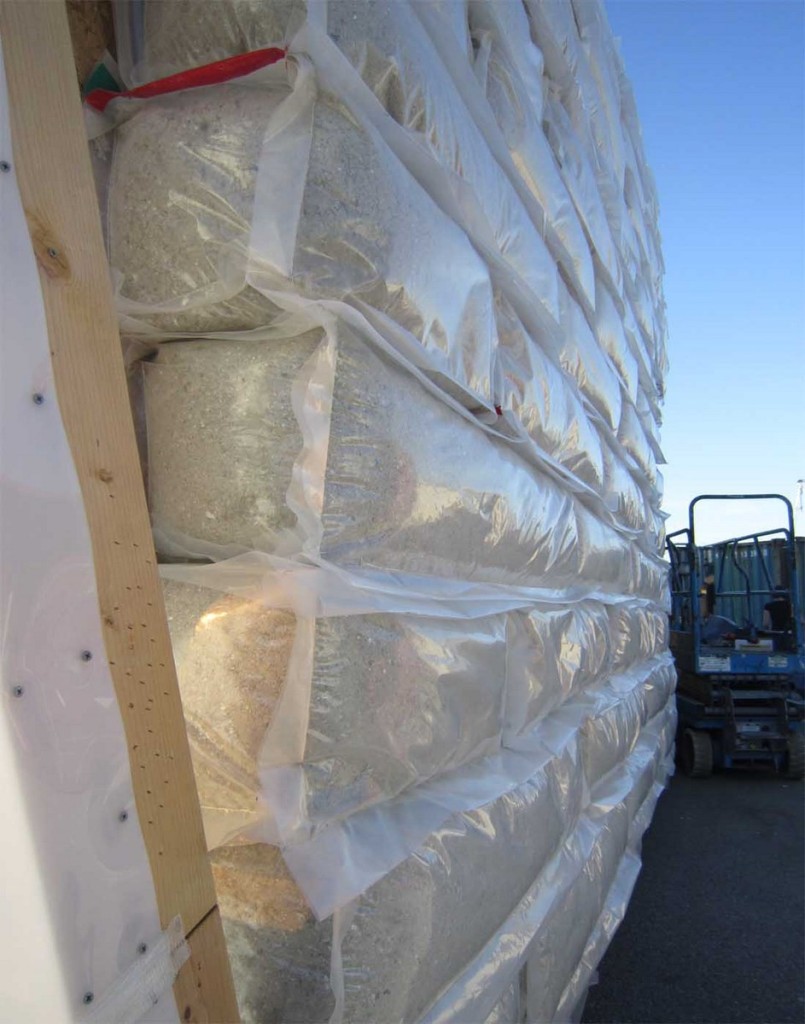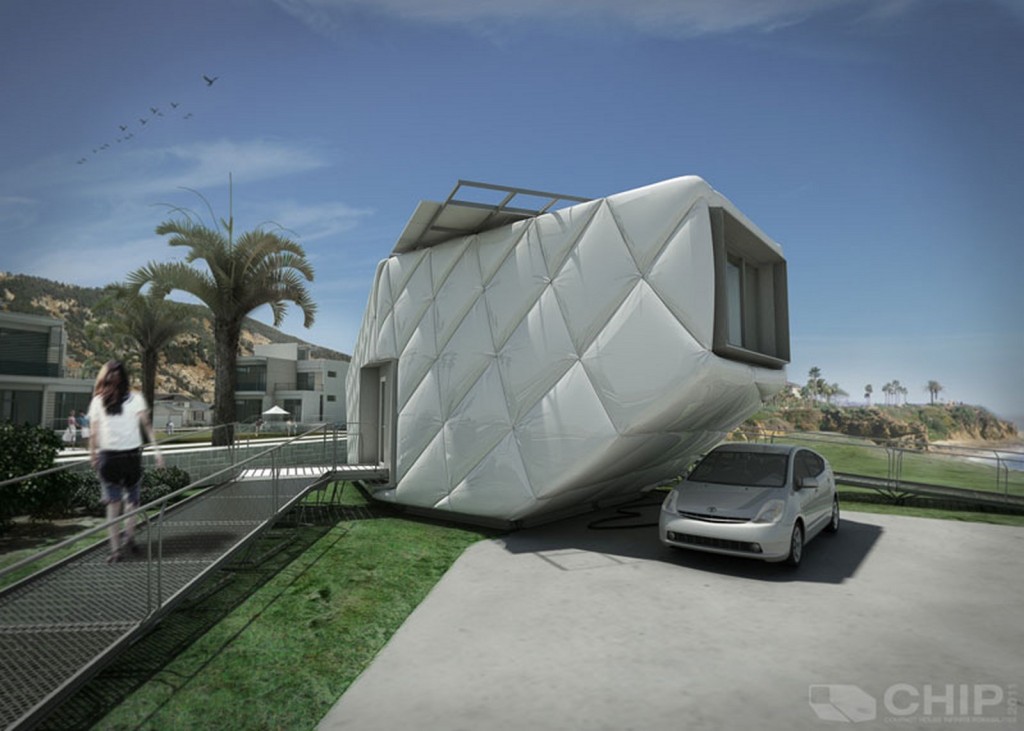19 university teams from across the world are gearing up to make their way to Washington D.C. for the Solar Decathlon. Entitled CHIP (short for Compacted Hyper-Insulated Prototype) the residence’s geometry is designed to respond to the sun’s orientation while wrapped in a sun performative envelope.
Design Team : Students from SCI-Arch and Cal Tech.

While all 19 entries into the competition certainly redefine the aesthetic of a residence, SCI-Arch and CalTech’s seems to take it a step further. At first glance, one is simply intrigued by the puffy material wrapping the geometric form; and yet, of course, the look functions beyond a mere aesthetic shock value. Constructed using low-cost billboard material fastened with zip ties, dowel rods, and lag screws, this vinyl-coated fabric mesh “turns conventional wisdom on its head, wearing its thermal performance on its sleeve.”

By separating the structural members from the insulation layer, and wrapping the insulation assembly in a flexible vinyl membrane, CHIP’s exterior envelope has an extremely high R-values necessary for a Net-Zero house, at a significantly reduced cost, all the while indexing this performance in its physical appearance.

In terms of massing, the form is tweaked and shaped to find the balance between an optimal roof angle for year-round solar energy collection, and a comfortable, vaulted interior space with a minimal footprint. On the interior, the slight change in level divides the house spatially without compartmentalizing.
- RTFA 2026 Entries Open
- Register
- Jury
- GADA 2025 Results
- Previous
- Results | RTFA 2024
- Results | GADA 2024
- Results | GADA 2023
- Results | RTFA 2023
- Results | GADA 2022
- Results | RTFA 2022
- ACDA 2022 Results
- Results | GADA 2021
- Results | RTF Awards 2021
- Results | ACD Awards 2020
- Results | RTFA 2020
- Results | GADA 2019
- Results | ACDA 2018
- Results | GADA 2018
- RTFA 2017 Results
- RTFSA 2017 Results
- RTFSA 2016 Results
- RTFSA 2015 Results
- Results | RTFA 2015
- Results | RTFA 2014






